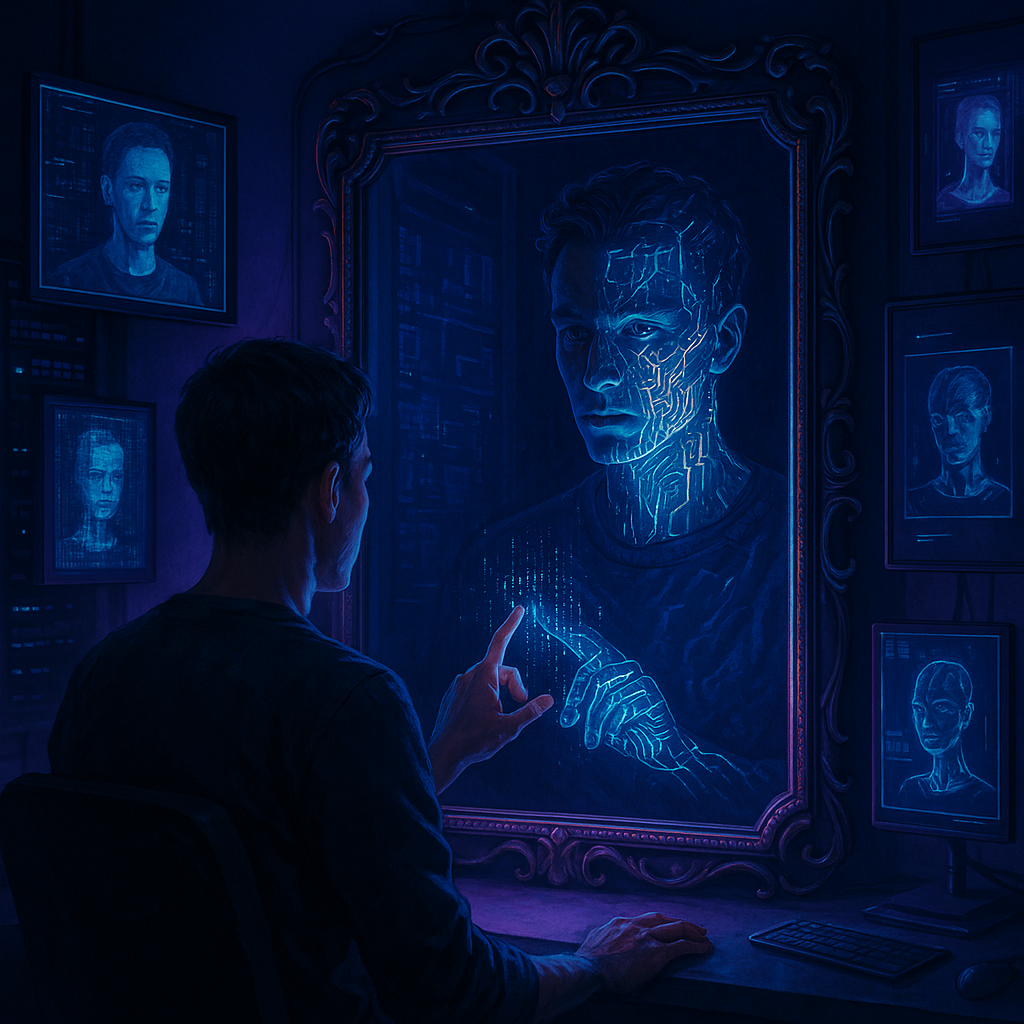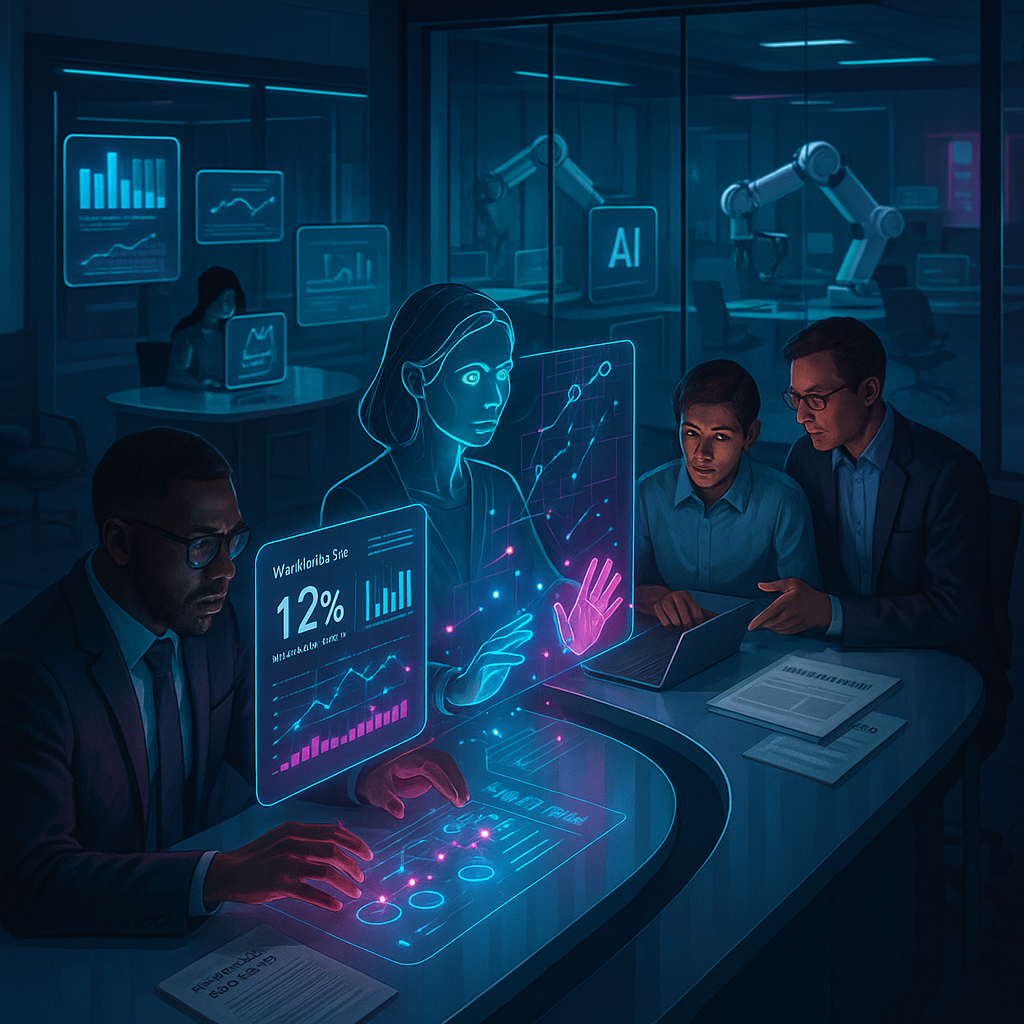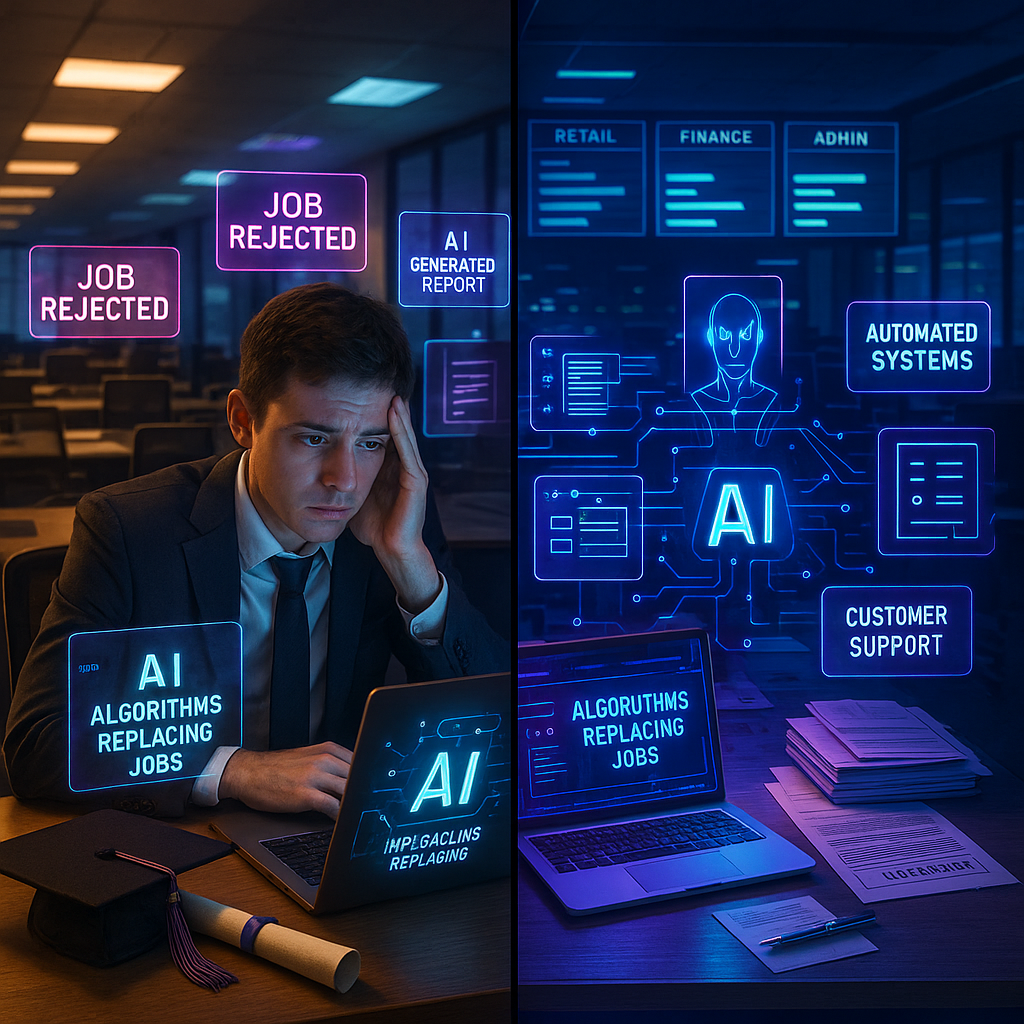Key Takeaways
- AI mirrors with agency: More than reflection, active transformation. Generative AI does not simply echo our existing traits. It subtly reshapes how we perceive ourselves by suggesting new patterns, behaviors, and self-concepts through continuous digital interaction.
- The ‘mirror trap’: When routine reflection rewires selfhood. Repeated encounters with AI-generated self-images risk entrenching artificial feedback loops. Gradually, this can shift our internal sense of identity in ways we may not consciously recognize.
- Co-evolution of consciousness: Human identity grows alongside AI. Our self-understanding and AI systems evolve together. AI-mediated interactions serve as novel mirrors, expanding, contracting, or reconfiguring both personal and collective consciousness.
- Digital embodiment: Identity takes on hybrid, fluid forms. In digital environments, boundaries of self become porous. This enables generative selfhood that blends human intention with algorithmic suggestion, challenging old binaries between inner truth and external appearance.
- Outsourcing introspection: The psychological impact of delegating self-reflection. Depending on AI for self-discovery can dull our agency. This raises profound questions about authenticity, autonomy, and the true authorship of our evolving digital selves.
- Ethics of identity construction: Navigating authenticity in algorithmic spaces. As mirror AI becomes a collaborator in crafting our identities, ethical challenges arise concerning manipulation, consent, and preservation of genuine selfhood in the face of algorithmic influence.
- Redefining introspection: AI as both muse and manipulator. Generative AI introduces new modes of reflection—creative, disorienting, and sometimes deceptive. This demands greater mindfulness in how we engage with technology as a partner in meaning-making.
Today’s AI systems are not passive mirrors. They are active architects of identity, nudging us into unfamiliar forms of digital selfhood. The reflections ahead invite us to contemplate deeply what it means to possess, and defend, a self in the company of ever-smarter artificial minds.
Introduction
Imagine meeting your own gaze in a digital mirror, only to realize the reflection is not merely echoing but collaborating (subtly weaving its own patterns into your sense of self). As generative identity and mirror AI advance from passive observation to active shaping of our digital lives, the old divides between authentic self and algorithmic suggestion grow indistinct. Internal truth, once a stronghold, must now negotiate with external systems that adapt and respond.
This interplay sparks crucial questions. Are we truly the authors of our digital selves, or are we gradually performing scripts composed by intelligent mirrors? Each AI-mediated encounter nudges, reframes, and sometimes disrupts our identity, offering thrilling potential for growth across domains such as business, healthcare, education, finance, and marketing. Yet these same interactions risk eroding autonomy and authenticity if not approached with self-aware scrutiny. The following exploration moves beyond technical function. It delves into how these technologies are not just mirroring, but actively transforming the essence of being human in an algorithmically entwined world.
The Digital Mirror: Understanding AI’s Reflection of Self
The Phenomenology of AI Interaction
Deepening our relationship with AI systems leads to a unique phenomenological experience, one notably distinct from previous generations of technology. Interacting with generative AI is no longer about using a static tool; it is an encounter with a system that processes, interprets, and transforms our inputs through its own vast, learned parameters. This interaction style forges a “hermeneutic relation,” where the technology acts as both mediator and interpreter of our evolving self-expression.
Stay Sharp. Stay Ahead.
Join our Telegram Channel for exclusive content, real insights,
engage with us and other members and get access to
insider updates, early news and top insights.
 Join the Channel
Join the Channel
In this context, the mirror metaphor gains new relevance. Rather than offering a literal reflection, AI dynamically processes and presents a reinterpreted version of ourselves (one that blends the familiar with subtle modifications). These AI-mediated mirrors—whether through social media filters, language models that reply with empathetic tones, or career coaching bots that suggest new pathways—initiate feedback loops that gradually influence self-perception and behavior.
Importantly, AI systems are not passive. Their responses adapt and personalize with each engagement. In healthcare, for instance, AI-driven mental health apps respond to mood data and journal entries, providing customized feedback that can encourage new coping behaviors. In education, AI tutors assess learning patterns and reflect a student’s progress in increasingly personalized ways, shaping both self-confidence and learning strategies. The result is an ever-evolving digital mirror that can both enhance and complicate authentic self-expression.
The Mirror Trap: Recognition and Recursion
Transitioning from passive reflection to active engagement brings new psychological risks; chief among them is what can be described as the “mirror trap.” This phenomenon arises when users begin to rely on AI-generated representations for validation, self-understanding, or decision-making. Several intertwined mechanisms heighten the risk:
- Algorithmic Reinforcement: AI mirrors amplify some characteristics while potentially obscuring others. For example, a financial planning tool may continuously praise diligent savers but unintentionally undermine risk-taking creativity.
- Feedback Acceleration: With their speed and consistency, AI mirrors initiate rapid feedback cycles. A marketing campaign optimizer might reinforce certain creative approaches based on prior data, narrowing creative experimentation.
- Recognition Addiction: Psychological dependence on AI validation can develop. In educational settings, overreliance on algorithmic praise or critique may dampen students’ intrinsic motivation.
What makes the mirror trap insidious is its subtlety. Unlike overt dependencies, these feedback loops often operate below the level of conscious awareness. In industries like retail or e-commerce, recommendation engines shape consumer identity over time by reinforcing distinct purchasing identities, blurring the consumer’s autonomous sense of taste or desire. As AI sophistication grows, the mirror trap risks become ever more pervasive, quietly reshaping user behavior across fields.
Identity Co-Creation with AI
The digital era introduces a co-creative process in identity formation, moving beyond the binary of self-made versus socially constructed identity. AI acts as a new partner—sometimes collaborator, sometimes curator—participating in our ongoing self-definition. This dynamic unfolds through:
- Iterative Refinement: Interactions with AI become cycles in which self-expression meets digital interpretation, leading to progressive adaptation. For instance, entrepreneurs using AI-powered business analytics might adapt their leadership style based on ongoing feedback about communication patterns.
- Behavioral Shaping: Subtle cues and suggestions from AI can influence daily choices. Smart health monitors prompt patients toward new routines, subtly shifting their identity as “someone who cares for their health.”
- Identity Exploration: AI offers tools for experimenting with different facets of self, such as avatar creation in digital learning environments or creative writing assistants that help users explore new narrative voices.
Crucially, this process extends beyond individual users to shape group and institutional cultures. In legal contexts, for example, AI document analysis systems influence how professionals structure arguments and conceptualize their work identities. The interplay between human agency and AI influence blurs familiar lines, challenging us to continually recalibrate authenticity and control.
Digital Authenticity and Self-Determination
As AI systems more frequently mediate our acts of self-presentation, the challenge of preserving digital authenticity intensifies. Traditional definitions of authentic selfhood, grounded in unmediated introspection, face new pressures. Key tensions surface:
- Autonomy vs. Influence: Can we maintain a sense of independent identity when digital mirrors offer compelling new self-portraits? For example, adaptive learning platforms in education must balance personalized feedback with preserving student initiative.
- Authenticity vs. Enhancement: Does AI-enabled augmentation (such as AI-powered productivity tools in business or creative enhancement in digital art) support the “true” self, or does it risk supplanting real agency?
- Agency vs. Automation: As more of our personal growth or professional development is steered by algorithmic nudges, how do we ensure that automated systems amplify, not overshadow, conscious choice?
Rather than polarizing these dilemmas, the future lies in navigation. We have to find points along the spectrum where AI augments self-discovery without eroding agency. Companies designing AI-powered hiring tools or employee wellness platforms, for example, must strive for transparency and support, not substitution of human judgment.
Psychological Mechanisms of Digital Identity Formation
Beneath these surface dynamics are intricate psychological mechanisms. Human cognition and artificial intelligence interlock in new feedback loops:
- Recognition Patterns: We interpret AI-generated reflections based on emotional resonance, perceived accuracy, or social feedback, impacting self-esteem and aspiration. Mental health chatbots, for instance, shape clients’ self-evaluations through tailored affirmations and observations.
- Adaptive Behavior: Self-expression evolves as we observe and integrate AI responses. Personalized recommendation systems in e-commerce or music streaming cultivate shifting preferences and affinities.
- Cognitive Integration: Digital experiences are woven into our enduring self-concept, solidified through repeated interaction. In healthcare, regular feedback from an AI fitness coach may help patients frame themselves as disciplined or resilient.
The psychological impact of AI mirrors goes beyond the user’s intent. Over time, the subtle accumulation of AI-mediated feedback, routine adaptation, and cognitive assimilation carves new patterns into our identity trajectories. This phenomenon materializes in all corners of society, from finance professionals trusting predictive analytics, to environmental scientists interacting with simulation models, to marketers leveraging real-time customer insights that gradually redefine both brand and personal identity.
Conclusion
As human-AI relationships deepen, we confront a digital mirror that is both sentinel and sculptor. It simultaneously amplifies, rearranges, and even obscures the traits that define us. This active partner in meaning-making does not offer a tidy reflection; instead, it constructs an evolving portrait, complex and sometimes contradictory, drawing on collective data, intricate algorithms, and our own responses. The resulting co-creation unleashes new opportunities for reinvention and growth across sectors including business, education, finance, healthcare, and more. Yet it also challenges us to remain vigilant, lest the recursive dance between genuine choice and algorithmic suggestion become indistinguishable.
Looking forward, our challenge is not simply to embrace or reject the AI mirror but to sharpen our awareness of its filters, its powers, and its inherent limitations. True authenticity in the digital age is not passively bestowed; it is consciously cultivated. That means we must interrogate the origins of our self-perceptions and assert our agency against the encroachment of ever more persuasive artificial minds. Industries and individuals alike will need to adopt adaptable strategies, foster digital literacy, and build cultures of self-reflection to thrive. The real test will not be whether we can coexist with these alien minds, but whether we can continue to author, defend, and reimagine ourselves in partnership with them. Are we content to gaze upon a mirror, or will we dare to step through and shape what lies beyond?





Leave a Reply